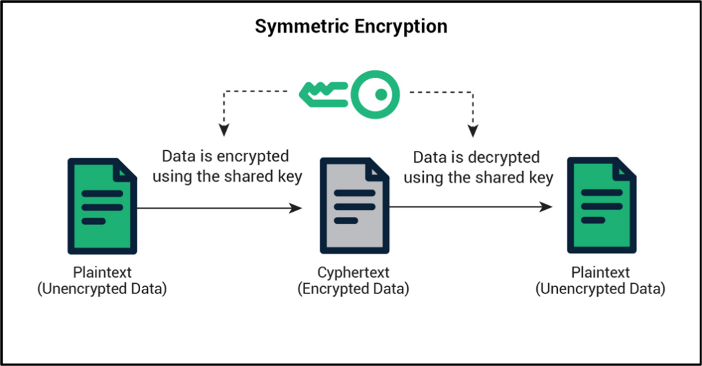The rapid evolution of quantum computing has captivated the imagination of scientists, technologists, and the general public alike. With its potential to revolutionize numerous fields, quantum computing has emerged as one of the most significant innovations of the 21st century. However, one pressing concern looms over this technological marvel: the implications for data security. Specifically, the question arises: will quantum computing dismantle the encryption protocols that safeguard our sensitive information?
To comprehend the profound impact quantum computing may have on encryption, it is crucial to first understand the principles that underlie both encryption and quantum mechanics. Traditional encryption methods, such as RSA and elliptic-curve cryptography, rely on mathematical problems that are computationally intensive, rendering them secure against attacks from classical computers. These algorithms hinge on the difficulty of factorizing large numbers or solving discrete logarithms. The security of these systems has been predicated on the notion that while it may take days, months, or even longer for a supercomputer to crack them, it is computationally infeasible to do so within a practical timeframe.
Enter quantum computing—a paradigm shift in computation. Unlike classical computers that manipulate bits as binary constructs (0s and 1s), quantum computers utilize quantum bits or qubits. These qubits can exist in multiple states simultaneously, thanks to superposition, and can be entangled with one another, allowing for parallel computation on an unprecedented scale. It is this very feature of quantum computers that propels them into the realm of potentially breaking traditional encryption methods with alarming efficiency.
One of the most notable algorithms anticipated to exploit quantum computing’s capabilities is Shor’s algorithm. Proposed by mathematician Peter Shor in 1994, this algorithm can factor large integers exponentially faster than the best-known classical methods. Specifically, it reduces the time complexity of integer factorization from exponential time to polynomial time, thus positioning itself as a formidable threat to RSA encryption. This shifts the landscape of data security dramatically, as organizations relying on RSA or similar algorithms could find their encrypted data vulnerable to rapid decryption in a quantum future.
Complementarily, Grover’s algorithm enhances the speed of brute-force attacks on symmetric key cryptography. While Grover’s algorithm does not completely negate the effectiveness of symmetric encryption, it does square the necessary key length to maintain a level of security against quantum attacks. For instance, if a 128-bit key would have been deemed robust in the classical world, a corresponding 256-bit key may be necessary to ensure similar security in a quantum paradigm.
This looming reality has led to urgent discourse within the cybersecurity community regarding the transition to post-quantum cryptography (PQC). PQC refers to cryptographic algorithms that are designed to be secure against the capabilities of both classical and quantum computers. It encompasses a diverse array of approaches, including lattice-based, code-based, and multivariate quadratic equations. Research and development in this field are ongoing, as organizations strive to identify algorithms that can withstand the quantum onslaught while remaining efficient and practical for real-world applications.
Nonetheless, the transition to PQC is fraught with challenges. First and foremost, there are existing infrastructures that rely heavily on traditional cryptographic systems. The sheer scale of integration required to transition to new algorithms presents logistical hurdles. Moreover, the security landscape is dynamic, with threats evolving continuously. As new quantum algorithms are devised, there lies the possibility that even PQC might need to frequently adapt, maintaining a perpetual state of arms race between attackers and defenders.
An additional dimension to consider is the timeframe involved in the eventual realization of quantum computing capabilities. While predictions argue that practical quantum computers may emerge within the next couple of decades, the timeline remains uncertain. Various technical obstacles exist, including issues related to qubit coherence, error rates, and quantum gate fidelity. Thus, organizations must balance their preparations for potential quantum threats with the reality of their current computational landscape.
Despite these complexities, educational initiatives have begun to proliferate, aimed at raising awareness about quantum threats and preparing for the post-quantum era. Collaborations among academia, industry, and government entities are ramping up, acknowledging the necessity of an integrated approach towards creating robust, future-proof cryptographic techniques. From securing email communications to safeguarding financial transactions, the implications of quantum computing extend far beyond the realm of academic curiosity; they touch every aspect of our digital lives.
The fascination surrounding quantum computing is not merely a consequence of its scientific potential; it stems from a broader narrative concerning humanity’s quest for progress and security. The rise of quantum technology embodies both promise and peril—a duality that captures the essence of human advancement itself. As we navigate this complex intersection of quantum mechanics and cryptography, the question remains: can we harness this magnificent uncertainty to protect the values we hold dear in the digital age?
In conclusion, the rise of quantum computing poses profound challenges to the cryptographic foundations that underpin our digital communications. As traditional encryption algorithms face existential threats, the urgency to develop and implement post-quantum cryptographic solutions becomes increasingly paramount. The intersection of technology and security provokes vital discussions about responsibility, adaptation, and resilience in a rapidly evolving landscape. As society approaches this precipice, the quest for solutions will necessitate innovation, collaboration, and commitment—a multifaceted approach to ensure that encryption will endure in the quantum age.








Leave a Comment